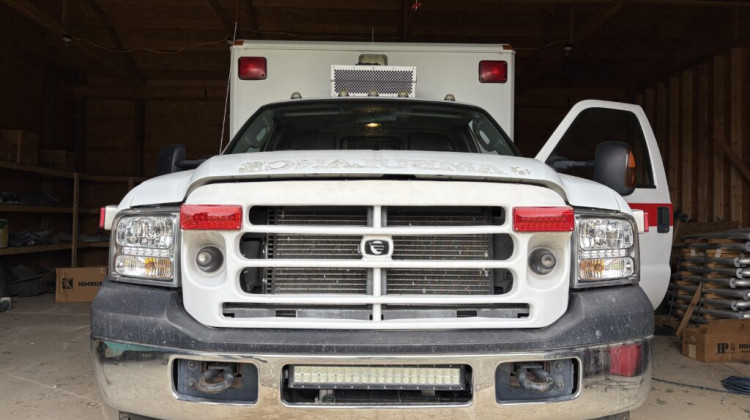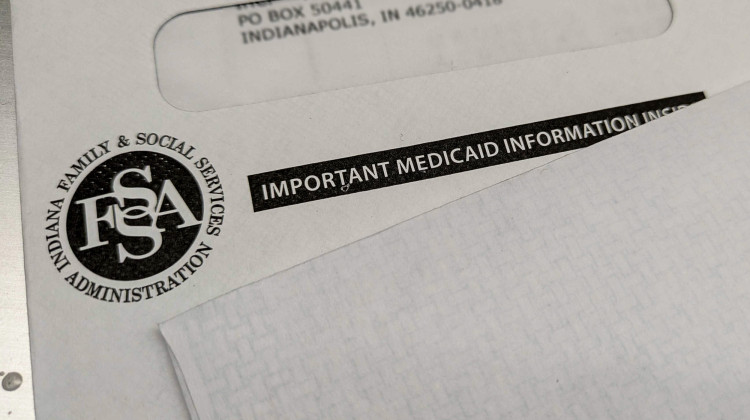
Eight states are following Massachusetts' lead and trying to strike the right balance of slowing health care spending without causing too much pain to the industry.
PixabaySky-high hospital bills have left 100 million Americans struggling with debt — unable to pay for the chemotherapy, diabetes medicine, surgery or other care they need to stay alive and healthy.
Nonprofit hospitals are part of the solution, offering free or discounted care to needy patients in exchange for big tax breaks.
But an analysis by the health policy research group KFF shows the nation’s nearly 3,000 nonprofit hospitals provided $16 billion in charity care in 2020 compared to their roughly $28 billion in tax breaks.
The $12 billion gap has drawn hard looks from state and federal lawmakers, especially as some nonprofits have sued patients or threatened their credit over unpaid bills.
As aggressive billing practices make headlines and 40% of U.S. adults scramble to pay for their care, pressure mounts on hospitals to pick up a bigger share of the charity care tab, particularly nonprofit institutions.
“The taxpayers are not getting their fair share when it comes to taxpayer subsidies to nonprofit hospitals,” said Ge Bai, an accounting and health policy professor at Johns Hopkins Carey Business School.
In a study published in 2021, Bai and her co-authors found that for-profit hospitals spend more than nonprofits – with $3.80 of every $100 in expenses going toward charity care, compared to $2.30 spent by nonprofit institutions.
Diving deeper into the numbers reveals a wide variation in how much free and discounted care nonprofit hospitals provide.
Hospital executives and some researchers argue that charitable giving is just one way to measure “community benefit,” or how nonprofits give back. They warn that policymakers' proposed remedies could push some nonprofit hospitals to cut services that are expensive but valuable to the community, and even drive some safety-net hospitals out of business — hurting the very patients they’re trying to help.
“I think researchers and also policymakers tend to be overconfident in what policy can do,” Bai said. “If we are too aggressive, the unintended consequences can be worse.”
How did we get here?
The federal government has never defined how much free care or benefit to the community hospitals must provide. The Internal Revenue Code does require health systems to establish policies about how they dole out free or discounted care – and report totals on their tax returns. Government watchdogs say oversight is lax, noting that the IRS has not revoked any hospital's tax-exempt status over a paucity of charity care in the last decade.
“We see the same hospitals providing a lot and other hospitals providing very little,” said Gary Young, who leads the Center for Health Policy and Health Care Research at Northeastern University. “And that doesn’t seem to change very much over time.”
Research shows some nonprofit hospitals spend close to 10% of their expenseson charity care and other community benefits, while others spend as little as one tenth of one percent.
This disparity has continued for decades, Young said, because of a lack of explicit guidance from the federal government.
States experiment with their own rules
At least 14 states have issued their own requirements regarding hospital charity care. Proponents say if the state rules work, they might serve as a blueprint for a national fix.
The states have generally taken one of two approaches. The first — maybe best exemplified in Texas and Oregon — requires all nonprofits to devote a certain percentage of total revenue to free care.
In Texas, the number to hit is 4% of revenue. The result has been mixed, according to an independent analysis: Some hospitals in the state increased their giving to meet the new standard, while previously more generous hospitals cut back.
Oregon, taking a similar tack, bases the annual target it sets for each hospital on the hospital's annual revenue and the amount of free care the institution already provides. So far, that strategy seems to be working: A state report found that, in the first year, Oregon’s nonprofit hospitals spent a total of $2.2 billion on free care and community benefits — one-and-a-half times the state’s target.
Eleven states, including Nevada and Washington, have adopted the second approach. These states look at each patient’s income to determine how much free care a hospital must provide that person.
It’s not yet clear if these laws lead to less medical debt among the neediest patients, or to more charity care overall. But proponents say they do at least give regulators a rule to enforce.
Washington State successfully sued four health systems, including Providence Health, a Seattle-based nonprofit, for violating the state’s charity care policy. As a result of the court decision, Providence agreed earlier this month to refund patients about $158 million for care that should have been free or discounted under state law.
The downside: Safety-net hospitals and underserved communities could suffer
Critics warn these strategies to reach closer to 1:1 parity with the nonprofits’ tax breaks could have unintended consequences in marginalized neighborhoods.
“We have redlined communities in this country in health care,” said Bruce Siegel, president and CEO of America's Essential Hospitals, a trade group that represents safety-net hospitals — health systems that treat the highest percentage of low-income and uninsured patients.
Laws pushing for more charity care assume that all nonprofit health systems can afford to give away more care, Siegel said, and that’s not necessarily true. After being battered by COVID, labor costs and inflation, some hospitals face a precarious future.
While a slice of nonprofit hospitals are in a strong financial position, many safety-net hospitals are barely scraping by. Siegel said the members of his association are in the red, on average, by 9%. And while these 300 safety-net institutions account for just 5% of all U.S. hospitals, they do provide a quarter of all charity care.
“I'm concerned that those who really are delivering on the promise and really are living the mission and are being accountable, are getting mixed together or tarred with the same brush as other parts of the industry,” Siegel said.
Nonprofit hospitals that continue to lose money, he believes, could soon be forced into one of three hard decisions: cut services; sell to a for-profit company or close down.
All of these options, he said, harm patients.
When this hospital cut services, vital treatment was lost
Denver Health, a major teaching and safety-net hospital system in Colorado’s capital, lost $32 million in 2022 and barely broke even last year. When it chose to eliminate certain kinds of health care to help make ends meet, critical mental health services were cut back.
Though Colorado already ranked 45th out of 50 states in terms of providing sufficient access to mental health services, Denver Health eliminated 15 of its 78 inpatient psychiatry beds. CEO Donna Lynne said her community has taken a hit.
“I think that there are hundreds of people going without care, because Denver Health cannot open up enough beds to provide the care that they need,” Lynne said. But inpatient psychiatry care is expensive — for each bed the hospital system provides, it loses about $200,000 annually.
Lynne turned to state and local officials to kick in more money to help the system. To date, she said, she’s only managed to secure a few million from state lawmakers.
The financial strain on this nonprofit hospital has forced it to forgo even basic maintenance repairs, Lynne said. The result: a health system that appears to be falling apart at the seams.
“The pipes froze,” she said. “When it got warm, the pipes burst and we had a flood.”
These types of problems, Lynne said, are indicative of what many safety-net institutions are facing across the country. It’s a reality she’d like more policymakers to recognize.
“Denver Health has been here for 163 years,” Lynne stressed. “We are the oldest hospital in the state of Colorado. And whether it's COVID or it's shootings or it's routine cancer, we are expected to serve this community. We're essential — but the money isn't.”
For-profit hospitals are less likely to invest in burn units and obstetrics
Some financially strapped nonprofits have faced an even bigger transformation when taken over by a private equity firm or other for-profit enterprise. Over the last five years 29 nonprofit hospitals were acquired by for-profit companies, according to health care analytics firm Levin Associates.
For-profit hospitals operate differently than nonprofit systems, said UCLA law professor Jill Horwitz who has studied the difference between the two types of hospitals for decades. “They're just going to follow the money more, because that's what for-profits do,” she said.
Providing free and discounted care is only one way nonprofit health institutions give back to the community, Horwitz said. Her research shows nonprofit hospitals are more likely to offer services that tend to lose money, but are highly valuable like burn units, hospice, substance use treatment and psychiatric care.
According to Horwitz’s recent study in the journal Health Affairs, nonprofits are 6% more likely than for-profits to offer these services.
“What this tells us,” she said, “is that nonprofit hospitals are focusing more on patient need than profit-making when they're making their decisions of what services to offer.”
Hospitals can’t solve a 'national insurance problem’
Horwitz would like to see lawmakers tap the brakes on their calls to end tax exemptions for nonprofits. Policies that ask hospitals to foot the bill may be well-meaning, she said, but they fail to address bigger systemic problems with the U.S. health care system — namely a lack of universal coverage and high prices.
Even with Medicare and Medicaid subsidizing health care for patients who are elderly, poor or, in some cases, disabled, nearly 25 million Americans are still uninsured and millions more are underinsured.
“It’s wishful thinking,” Horwitz said, “to think that nonprofit hospitals can solve an enormous, long-standing national insurance problem. I want us to be focusing on the costs of health care and access to care.”
Those problems, she said, are too big for hospitals to solve on their own.
Tradeoffs’ coverage of health care costs are supported, in part by Arnold Ventures and West Health.
This story comes from the health policy podcast Tradeoffs, a partner of Side Effects Public Media. Dan Gorenstein is Tradeoffs’ executive editor, and Alex Olgin is a senior reporter/producer for the podcast, which ran a version of this story on Feb. 29.
Side Effects Public Media is a health reporting collaboration based at WFYI in Indianapolis. We partner with NPR stations across the Midwest and surrounding areas — including KBIA in Missouri, Iowa Public Radio, Ideastream in Ohio and WFPL in Kentucky.
 DONATE
DONATE






 Support WFYI. We can't do it without you.
Support WFYI. We can't do it without you.